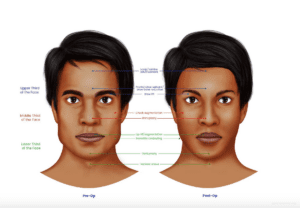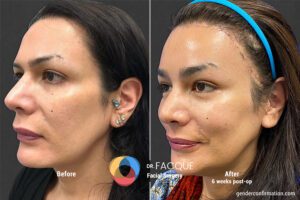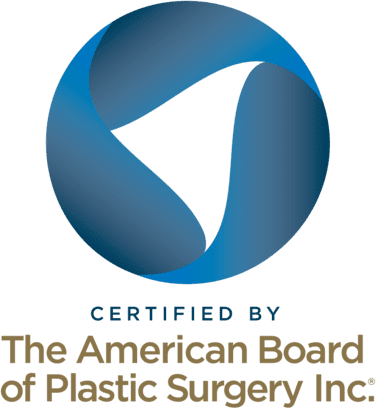How to Pay for Facial Feminization Surgery
Medically reviewed by Jennifer Richman on January 17, 2025.
Understanding Facial Feminization Surgery Costs
Facial feminization surgery (FFS) refers to a collection of procedures that reshape the face’s bone and/or soft tissue to help a patient experience greater gender alignment with their facial features. Common procedures include the brow bone reduction, the hairline advancement, and the tracheal shave. For many patients who seek out FFS, understanding the cost of these surgeries can be overwhelming. Depending on the number of procedures, FFS can cost anywhere from $4,500 to $100,000 for patients paying out of pocket. Insurance coverage can drastically reduce the cost of this surgery. Many factors influence the total cost of FFS and in this guide we aim to give our patients a better understanding of how to pay for facial feminization surgery.
Surgeon Expertise
More experienced surgeons and board-certified plastic surgeons may have higher costs to reflect their skills and/or reputation. We encourage patients to choose surgeons who have training and experience not only in craniofacial surgery, but also have experience working with gender diverse patients. Doing so reduces your chances of complications and can ensure that you feel satisfied with your results. Your surgeon should be communicative with you about your surgical goals and what to expect from FFS.
Geographic Location
Undergoing surgery in large and well-resourced medical facilities in expensive cities will influence the cost of your procedures. Location can not only impact the cost of your surgery, but also travel and lodging costs. Patients will sometimes look to get surgery in areas with lower costs of living to lessen the overall expense of their surgery. If you are traveling to the San Francisco Bay Area for surgery, you can consult our free travel guide PDF resource on how to save money on travel and accommodations, as well as find trans-friendly resources and tourist sites for your stay.
Consultation
The Gender Confirmation Center (GCC) provides free in-person or virtual consultations for interested patients. However, many practices do charge for office visits, consultations and follow-ups. These can add up over time, so it is vital to include them in your budgeting. Certain insurance plans may cover the cost of office visits.
Procedure Costs
Each facial surgical technique is different in complexity and cost. Generally speaking, in the United States, a rhinoplasty may cost up to $18,000, while a jaw/mandible contouring procedure can cost up to $50,000. If you elect for both, you should consider the total cost of multiple surgeries. Some surgeons will offer discounts when these procedures are grouped together. Please note that the above prices are not estimates for the GCC. If you would like a quote for your procedure, you can solicit a free surgical consultation for us to establish what your unique surgical plan will be.
Other procedure costs include fees for anesthesia, operating room use and post-operative care. You will also need to consider supplies such as OTC medications or extra dressings. Please note that most facial surgeons will include the cost of dressings (e.g., head wrappings) in your quote for surgery. However, after you leave the hospital, you may need to buy your own Ace bandages as you change them out during the first few weeks of recovery.
Insurance Coverage for Facial Feminization Surgery
Requesting insurance coverage is often the first step in accessing affordable facial feminization surgery. Private insurance companies generally recognize many trans and non-binary patients’ need for FFS, but require documentation to approve coverage. This can include a letter from a mental health professional and/or a referral from a primary care provider if a surgeon is an out of network provider. Please note that most insurance providers that have gender benefits and cover FFS require that patients be on estrogen hormone replacement therapy (HRT) for at least six months before surgery.
While this is a general overview, it is best to confirm your individual requirements and benefits through contacting your insurance provider. You may also need to review requirements for individual procedures under the umbrella of FFS. If you elect for surgery at the GCC, our insurance advocacy team will work with you to secure coverage. We have helped about 90% of our patients receive some form of coverage for their surgery.
Documenting Medical Necessity
As discussed earlier, insurance companies may ask to see evidence of “medical necessity” for surgery in order to cover it as a non-cosmetic procedure. Letters from a licensed mental health professional should suffice in addressing this concern. We advise working with your therapist and care team to ensure that your documentation meets the requirements outlined by your insurance providers. Oftentimes, providers are not clear about these requirements until patients make their first submission for pre-approval. That is why we have created a free resource on what we have seen to be successful practices for support letter writing. You can consult our recommendations on this page.
Generally, according to the Standards of Care laid out by the World Professional Association for Transgender Health (WPATH), a letter from a mental health professional should include the following:
- General identifying information about the patient
- Any relevant diagnoses, most important, gender dysphoria
- How long the therapist has worked with the client
- An explanation of how they meet surgical requirements
- A statement that informed consent has been obtained
- A statement that the therapist can be contacted to coordinate care
By emphasizing these points, you can begin to build a strong case for insurance coverage for FFS.
Financing Options for Facial Feminization Surgery
Figuring out how to pay for facial feminization surgery can be one of the biggest barriers in your transition. While insurance coverage is available, patients may experience denials or will still need to personally finance some of the cost of surgery. There are multiple financing options that can fill these gaps.
Care Credit
The GCC partners with Care Credit which helps patients regardless of insurance to cover the initial cost of surgery and appointments. Care credit is accessible and provides tools such as a payment calculator to view your monthly payment. You can view more information and apply on their site.
Scholarship Opportunities
The GCC works with several organizations that provide grants to cover the cost of gender affirming surgery for patients. You will need to apply to these separately, and we encourage you to look through the applications to see if you may be eligible.
- Point of Pride: Point of Pride provides financial assistance for transgender individuals seeking surgery through their Annual Transgender Surgery Fund. A requirement to note is that your surgery must be scheduled on or after March 1st of the following year.
-
- The Jim Collins Foundation: The Jim Collins Foundation offers two grants for gender-affirming surgeries: the General Fund, which covers 100% of surgical costs, and the Krysallis Anne Hembrough Legacy Fund, which covers 50% of costs and requires the patient to match the other 50%.
- Genderbands: Genderbands helps transgender people pay for transition related costs. They offer grants that cover medical and surgical procedures, as well as legal documentation.
Effective Crowdfunding And Mutual Aid Strategies
Crowdfunding and mutual aid are also tools used by patients to cover the cost of surgery. While some use social media, such as Instagram or Facebook to raise money within their personal circles, others opt for platforms such as GoFundMe or Kickstarter. A good place to start is to write a letter addressing funders describing your needs. It is also crucial to have a good idea of how much you need to ask for in your campaign.
Creating and maintaining a crowdfunding campaign can be very time consuming, and it is important to celebrate milestones along the way. When you meet goals, it can be encouraging to funders to give updates and show gratitude. Keep in mind that while mutual aid and crowdfunding can be powerful tools to raise money for surgery, many do not meet their total funding goal via these efforts. However, it can be helpful to have received some money that can go to some of the cost of your surgery or other related costs such as supplies for recovery.
Budgeting for Facial Feminization Surgery
Regardless of payment method, it is vital to create a budget. We understand that if you are paying any portion of surgery out-of-pocket, you want to know exactly how much that will be. Each surgery is different and will cost a different amount. Below you can get an estimation of how much FFS procedures will cost you without insurance. Note that these are grouped by the area of the face they are performed on and that they are only estimates. The exact cost of surgery varies on a case-by-case basis and precise quotes can only be given after a consultation with your surgeon where you both agree on the exact procedures that will be performed.
| Procedure Type | Price Range |
| Upper third of face (hairline, frontal bone, brow) | $10,000 – $50,000 |
| Middle third of face (nose, cheeks) | $6,000 – $18,000 |
| Lower third of face (lip, jaw, chin, neck) | $4,500 – $50,000 |
Your surgery will likely be your biggest expense, but you must include other costs such as preoperative medical exams, medications, recovery and post-operative supplies in your total budget. For example, if you plan to undergo a brow bone reduction, you will be asked to undergo a CT scan before your procedure so that your surgeon can get proper imaging of the area beforehand. If your insurance is covering the cost of surgery, the CT scan will likely also be covered. Additionally, some patients travel for surgery, so lodging and travel costs should be considered if that will be the case for you.
We understand that budgeting for surgery can be overwhelming for some. It can be difficult to get insurance coverage and find a payment method that works for you. For some, using budgeting tools or apps can help with organization. If you prefer, excel sheets can help keep digital records of your finances. Overall, it is very possible to successfully pay for FFS and many transgender people are deeply satisfied with their choice to undergo gender-affirming facial surgery. Creating a budget can ease the process and stress around finances.
Long-Term Financial Planning Post-Surgery
Keeping track of your finances does not just end at budgeting and paying for surgery. Expenses can rack up after surgery, especially with follow-up procedures and post-operative care. Revisions or complications after surgery should also be considered in your financial planning. If you take on debt for surgery, you will need to manage this by sticking to a structured repayment plan.
Likewise, you will likely need to take time off of work during your FFS recovery. This can range from 2-6 weeks off work, depending on the type and number of procedures you undergo as well as the type of work you do (manual labor vs. a desk job). If you are not able to get paid sick leave for this time, you should create a safety net for when you may not have a steady stream of income. Ensuring that you have saved enough and arranged for a post-surgery financial safety net can truly be a lifesaver after surgery. Staying mindful of not only how much surgery will cost you, but also how it will impact your finances long term will help you focus on the life changing effects from gender affirming facial surgery.
FAQ
Is it possible to appeal if my insurance claim for FFS is rejected?
It is possible to appeal, especially if you have all the necessary documentation for receiving Facial Feminization Surgery such as a support letter from a licensed mental health professional and proof that you have been on estrogen HRT for at least 6 months.
If you work with the GCC, our insurance advocacy team will walk you through prior-authorizations and appeals to help secure coverage. It can be helpful to review our list of accepted insurance providers. However, if you continue to receive denials, there are multiple financing options that can help in paying for your surgery.
Will insurance cover revisions?
Similar to your initial surgery, revisions can be covered if they are deemed medically necessary. You may need further documentation for a revision, and it is best to reach out to your individual insurance provider. If you seek a revision at GCC, our insurance team will continue to work with you.
Request a Free Surgical Consultation Today.
All virtual and in-person consultations with our board-certified surgeons are free. Once you fill out this form, our patient care team will reach out and guide you through every step to get to surgery.








